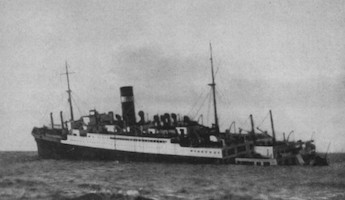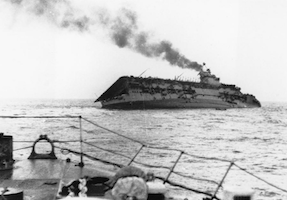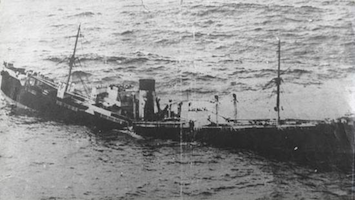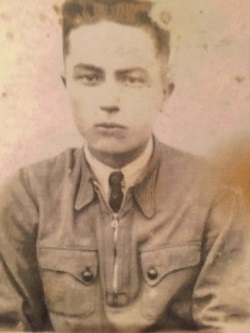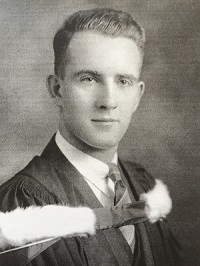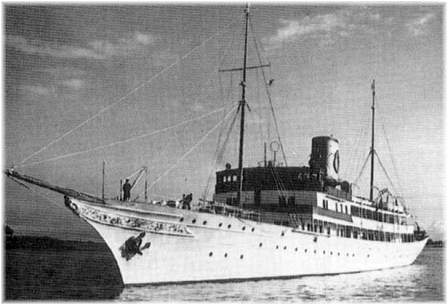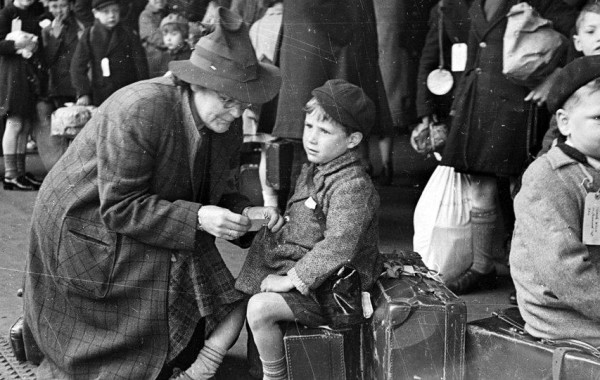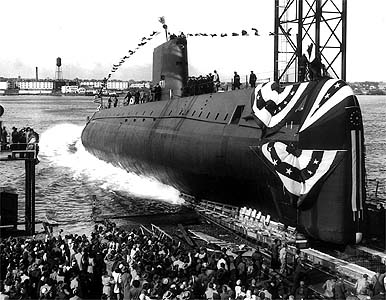Having torpedoed the first British ship of World War 2, Oberleutnant Fritz-Julius Lemp brought his submarine, U-30, to the surface after nightfall, Sunday, Sept. 3, 1939, to take a closer look at his victim. (See blog post “Fritz-Julius Lemp, Part 2,” June 1, 2016.) He saw the ship in distress, dead in the water, its stern riding low and listing six degrees to port. On deck, its crew busily lowered lifeboats into the water.
At some point during his observations, Lemp decided the ship was not sinking fast enough and ordered another torpedo to finish the job. At the same time, he received a note from U-30’s radio operator that a ship identified as Athenia had begun sending a distress signal that she had been torpedoed and was sinking fast.
The third torpedo proved to be a misfire and it is possible Lemp called out the gun crew to sink the ship with the U-boat’s 88mm. deck gun. (Details of Lemp’s attack were lost when his war log was altered.) Assuming Athenia was the name of his victim, he left the bridge to consult his copy of the Lloyds Register of Ships and determine her tonnage. At that moment, Lemp supposedly discovered he had torpedoed a passenger ship, an act forbidden by the international treaty Germany had signed in 1936.
Today, the question remains whether Lemp knew he was attacking a passenger ship when he fired that first torpedo. By all accounts, he was a capable commander, courageous and cool under pressure, but he also had a reputation for pushing the envelope. With such scant details of his personality, it’s possible to attribute his behavior to a variety of motivations.
Perhaps Lemp thought he was doing the unspoken bidding of his U-boat fleet commander, Kommodore Karl Dӧnitz, who considered the international treaty governing submarine warfare to be unworkable because it required submarines to warn merchant ships before they attacked.
Striking ships without warning maximized the U-boat’s effectiveness and could help neutralize the Royal Navy’s significant superiority over Germany on the high seas. Sinking a passenger ship would show just how implacable an enemy Nazi Germany intended to be.
On the other hand, Lemp, who was one of the younger U-boat captains, may have been eager to prove himself in the eyes of the fleet’s more experienced commanders and, thus, took the ill-advised shot. U-30 crew members who survived the war claimed that Lemp was shocked when he learned he had struck a passenger liner. He apparently ceased his attack with the deck gun and left the scene without reporting his actions to U-boat headquarters or revealing his presence by offering to aid survivors.
While the evidence is circumstantial it seems to point to Lemp’s having made a mistake when he attacked Athenia, most likely thinking he was firing on an armed merchant cruiser.
The war with England was only nine hours old and this young U-boat commander had committed a colossal blunder. But his war patrol would last another three weeks, time enough for Lemp to redeem himself, as we will see in our next blog.


